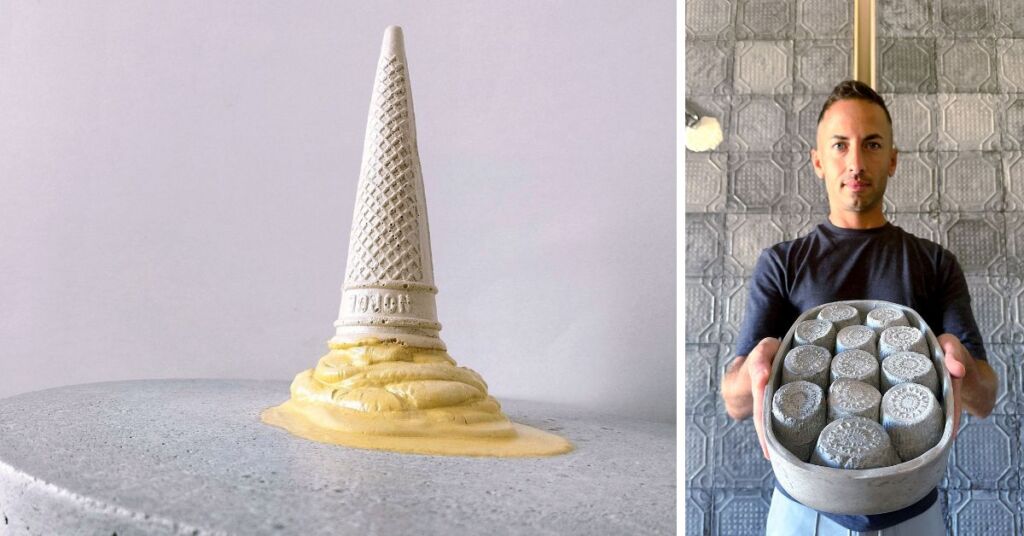Fallen Ġbejniet And Melting Ice Cream: This Gozo Artist Is Turning Childhood Disappointment Into A Bold Statement

A melting ice cream. A cracked ġbejna. These aren’t just quirky sculptures — they’re part of Id-Diżappunt, the debut solo exhibition by Gozo-born artist Nathan Portelli, and they carry a deeper message than you might expect.
Rooted in memories of childhood disappointment, Id-Diżappunt (which translates to The Disappointment) invites viewers to reflect on the things we once held dear — and how they’re slowly being lost in adulthood.
In Portelli’s case, that sense of loss is tied closely to what’s happening in Malta and Gozo right now: unchecked urbanisation, overdevelopment, and a gradual erosion of identity.
Portelli isn’t just expressing nostalgia — he’s actively mourning the destruction of countryside, the fading character of traditional villages, and the slow but steady dismantling of Malta’s architectural heritage. And he’s doing so using one of the very materials responsible for this transformation: cement.
In Id-Diżappunt, cement becomes both the message and the medium. It’s poured, sculpted, splattered and shattered — transformed into fallen cheeselets, slumped cones, and fragments of patterned tiles. Some pieces are playful.
Others hit a little too close to home. All of them prompt the viewer to take a closer look at what we’ve normalised — and what we’re losing in the process.
From traditional ġbejniet tumbling off their tray to explosive, colourful wall-hangings that echo Malta’s beloved festa fireworks, Portelli walks a fine line between humour and heartbreak.
There’s a cheeky wink throughout the show, but beneath it all is a deep, critical reflection on what we prioritise as a society — and what’s slipping through the cracks.
Born in 1988, Nathan Portelli holds a degree in History of Art from the University of Malta and splits his time between Gozo, Malta, and London.
Deeply connected to his homeland, his work is shaped by a growing concern for how economic greed and short-sighted planning are impacting the islands’ natural and cultural landscapes.
Have you visited yet?
